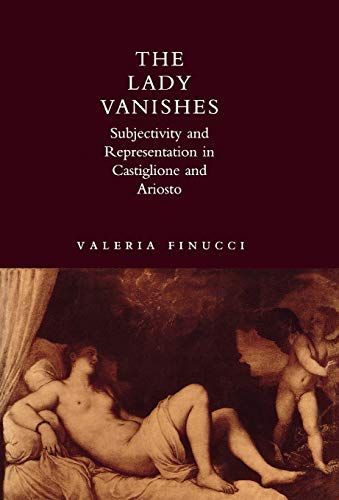
The Lady Vanishes Subjectivity and Representation in Castiglione and Ariosto
"The Lady Vanishes focuses on the representation of women in two key works of the Italian Renaissance: Baldassarre Castiglione's treatise Il libro del cortegiano (The Book of the Courtier) and Ludovico Ariosto's chivalric romance Orlando Furioso. Using feminist, deconstructive, and psychoanalytical arguments, the author investigates power relations and the construction of women's subjectivities in sixteenth-century debates on women and popular narratives." "The book examines the construction of women in different modes: woman as exemplary model and as ridiculed object; woman as narcissistically self-centered and as masochistically altruistic; woman as subject of desire and as object of desire; woman as ambiguously gendered and as radical spectacle of femininity. Because they offer an array of characters ranging from masculine women to feminized men and experiment with many forms of transgressive desire, Castiglione and Ariosto provide the perfect arena for problematizing the Italian Renaissance discourses on gender and sexual difference, on the production of pleasure and theories of selfhood, and on the body and modes of spectatorship." "The author argues that women are indispensable to Castiglione's conversation on the courtier and the court lady not because, as is often contended, he was sympathetic toward women, but because he found women useful for their central role in the male construction of men's own image. As for Ariosto, he resolves his narrative by subsuming women to culture and society, thus sealing out disorder. Although at times portraying female rebellion and resentment as empowering, in the end he punishes women displaying these qualities by banishing them from the text. In contrast, he celebrates the acquiescent woman in the figure of the lady warrior Bradamante, who, upon resuming a properly feminine role, becomes the progenitrix of a dynasty." "The Italian Renaissance discourse on women cast them in both assertive and docile roles. In the end, however, they were restrained or expelled; their society could envision a freer order for men but not for women."--BOOK JACKET.Title Summary field provided by Blackwell North America, Inc. All Rights Reserved